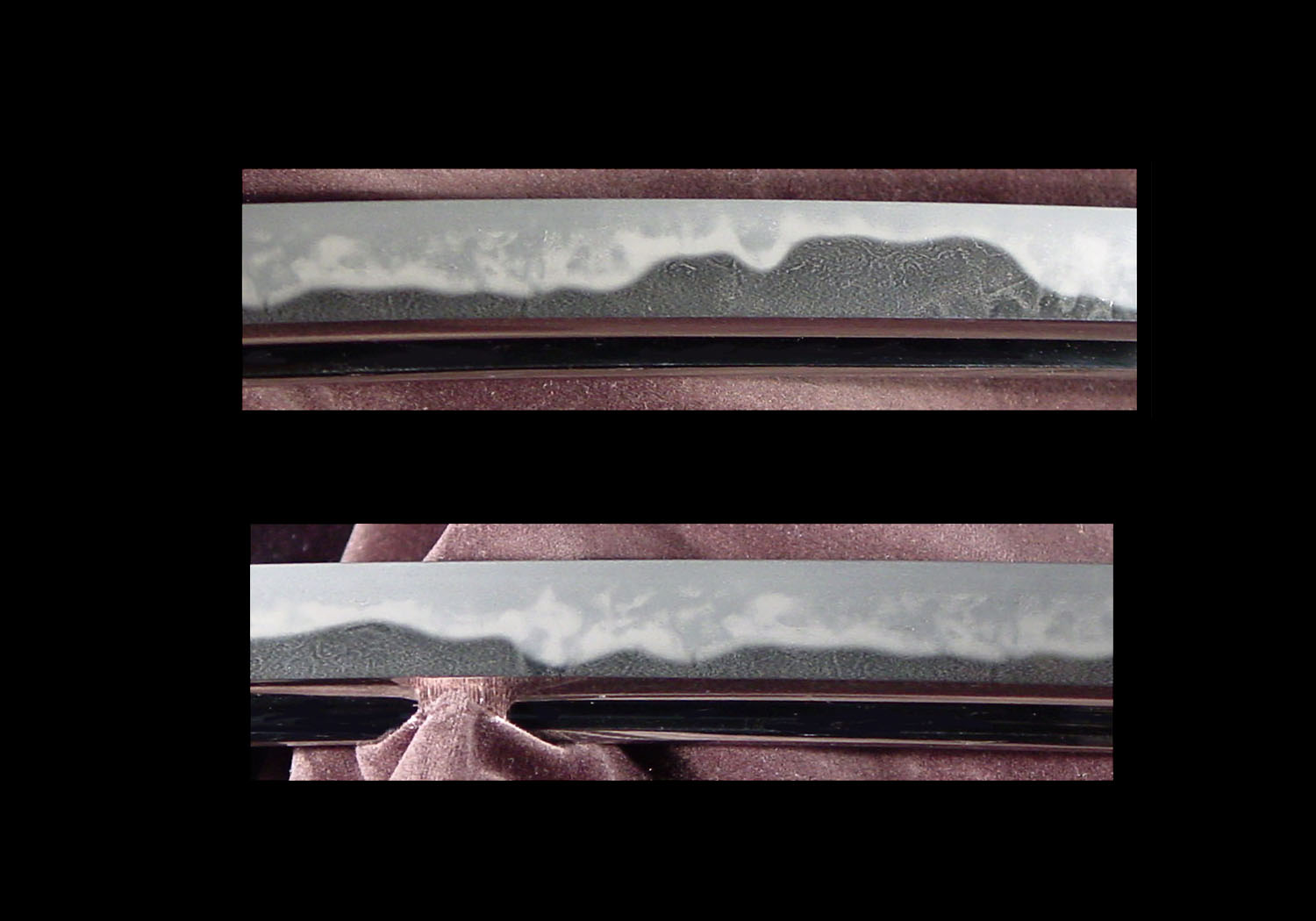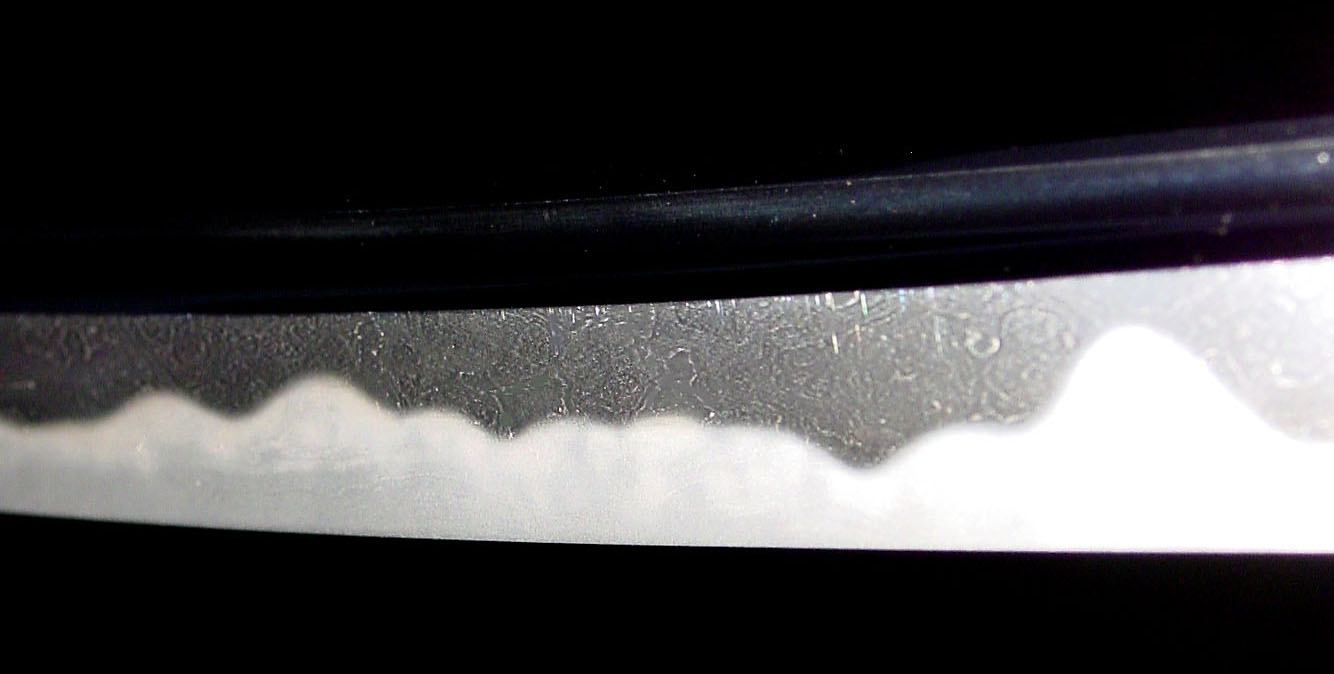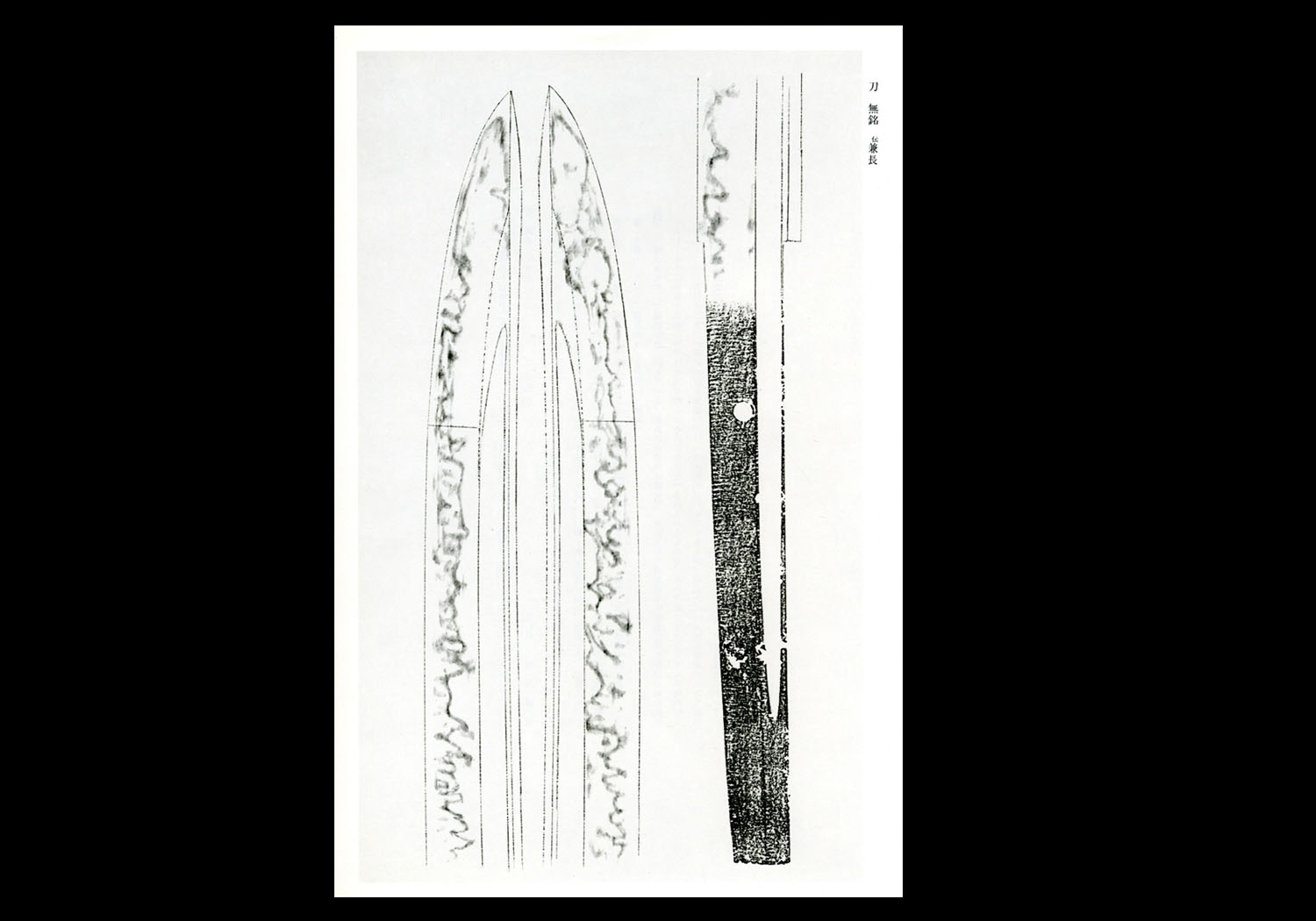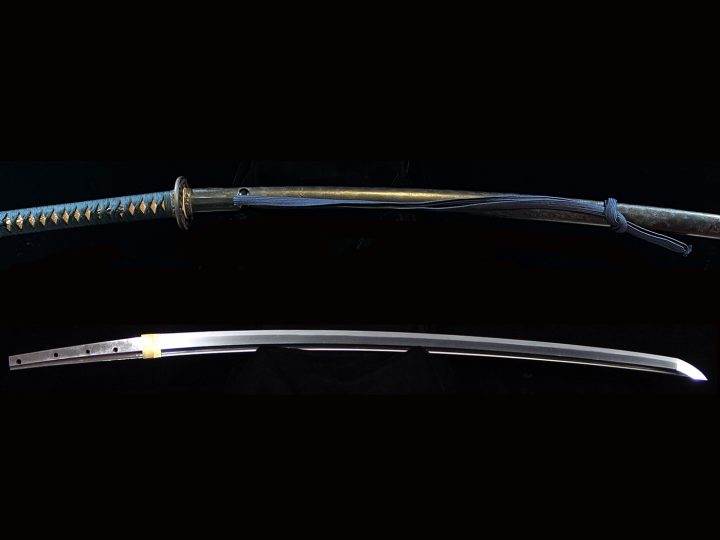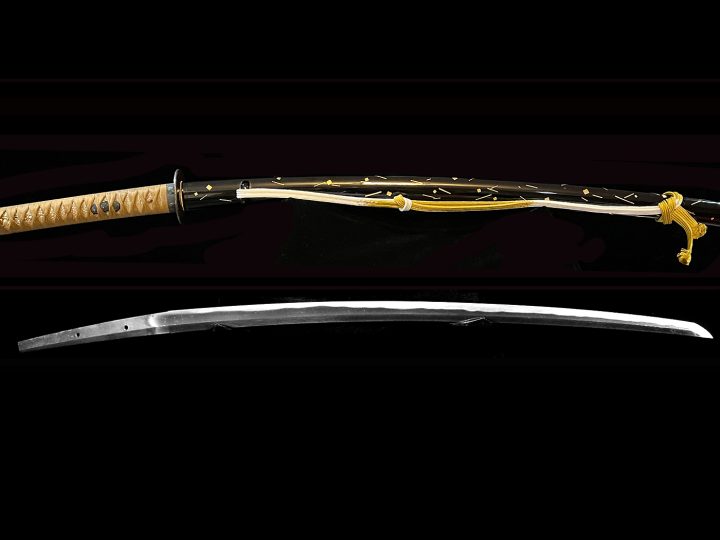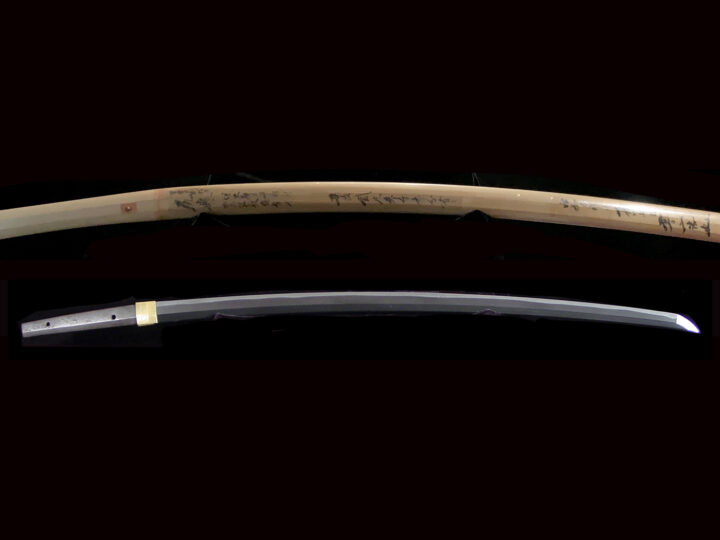
This is an outstanding katana that has been attributed to the well-known Bizen smith, Kanenaga (兼長). Kanenaga (兼長) is known to be a direct student of the top-rated Bizen smith, Nagayoshi (長義) who was also known as Chôgi (長義). Chôgi (長義) is one of the most representative of the swordsmiths of the Sôden-Bizen (相伝備前) group. He was one of the first smiths to break with traditional Bizen characteristics and was strongly influenced by the Sôshû style of sword making. He has traditionally been considered to have been one of the ten great students of Masamune (正宗). He worked in the heart of the 14th century and the earliest dated example of his work is dated in fifteenth year of Shohei (正平) or 1360. His latest dated work was done in second year of Kôreki (廉暦) or 1380. One side note of these dated works is the fact that since we know that Masamune (正宗) died in the year 1343, we can be fairly certain that Chôgi (長義) could not have been a direct student of Masamune (正宗). There is no doubt, however, that he came under the strong influence of the Sôshû (相州) school through Kanemitsu (兼光) or possibly other Masamune (正宗) students.
Chôgi (長義) was the son of Mitsunaga (光長) and was the younger brother of Bizen Nagashige (備前長重). Some of his better-known students were Kaneshige (兼重), Nagatsuna (長綱), Nagamori (長守), and, of course, Kanenaga (兼長).
Traditionally the soft steel used by the Bizen smiths is said to be very difficult to work in nie, however Chôgi (長義) and his students succeeded in this which tells us of their extraordinary skill as smiths.
Kanenaga (兼長) is generally considered to be the son of Kaneshige (兼重). Just as Nagayoshi (長義) is usually referred to as Chôgi (長義), Kanenaga (兼長) is often referred to as Kenchô (兼長) (the Chinese reading of his name). The fact that he was in the Chôgi Kei (長義系) and was one of his top students is undisputed. While I was unable to find any extant examples of signed tachi, several signed tantô of Kanenaga (兼長) remain today. One was made in Teiji 5 (貞治五年) (1366) and is very thick with a length of one shaku, 1 sun. It has a gunome-chôji midare hamon. The “kane” kanji is very like the early signature of Kanemitsu (兼光). Another tantô was made in the Ka-kei Era (嘉慶) (1387-1388).
According to the book, Ojakusho, Kanenaga (兼長) was still living during the Meitoku (明徳) Era (1390-1393). Kanenaga’s (兼長) signatures from Shitoku (至徳) to Ka-kei (嘉慶) (1384-1388) are somewhat rough, indicating that he must have been working until very late in his life.
One interesting side note about Kanenaga (兼長) is that his workmanship is very close to that of Chôgi’s (長義). Many of the mumei blades that are now attributed to Kanenaga (兼長) were, in the past, attributed to Chôgi (長義).
As noted, his long swords are mumei. They bear such a close resemblance to the works of Chôgi (長義) that they are extremely difficult to distinguish. This sword was designated to be a Jûyô Tôken in 1982. This was one of the very rigorous years of judging swords and awarding this coveted title. Below is a translation of the Jûyô zufu that clearly explains how much the works of Kanenaga (兼長) were influenced by and resemble those of his famous teacher, Chôgi (長義).
Designated Jûyô Tôken at the 29th Shinsa of December 8th, the 57th year of Shôwa (1982)
Katana, Unsigned: Den Kanenaga (兼長).
Measurements: Length: 69.1 cent.; Curvature: 1.6 cent.; Width at Base: 3.0 cent.; Width at Point: 2.65 cent.; Kissaki Length: 11.3 cent.; Nakago Length: 20.9 cent.; Nakago Curvature: none.
Characteristics: The construction is shinogi-zukuri with an iori-mune. The blade is wide and thick, and the shinogi is high. The curvature is rather shallow, and there is an ô-kissaki. The kitae is itame-hada with flowing areas that is covered in ji-nie, and there is chikei activity. The hamon is gunome-chôji with a mixing in of ko-notare. This is a large patterned, extremely busy midare-ba that contains ashi and yô activity. The habuchi is well covered in nie, and there are streaks of sunagashi. There is also tobiyaki and yubashiri activity. The bôshi is midare-komi with a slightly ko-maru tip, brushing and a hint of kuzure. There are bôhi carvings on both sides of the blade that taper off onto the nakago. The nakago is ô-suriage, and the end is kiri. The yasurime are kiri, and there is one mekugi-ana. The blade is unsigned.
Explanation: This is an ô-suriage mumei katana that is attributed to Bizen Kanenaga (備前兼長). Although there are very few signed works by Kanenaga (兼長), there are tantô dated to the 5th year of Jôji (1366), extending to the fourth year of Shitoku (1385) and the second year of Kakei (1388). In particular, the tantô dated to the Shitoku and Kakei eras place emphasis on the Sôshû-den, recalling Norishige’s (則重) style of workmanship. From such features as the style of the signature, we can agree that this is a sword-smith in the Nagayoshi (Chôgi) (長義) School. In general, the ô-suriage mumei katana, at a glance, have a close resemblance to the works of Chôgi (長義), and, in terms of stylistic features, the hamon are a busy midare-ba with abundant variations, making the style of workmanship that handed down from Chôgi (長義). This katana has a ji-ha that displays the salient features of the Chôgi (長義) School, making this an excellent example of the tradition.



